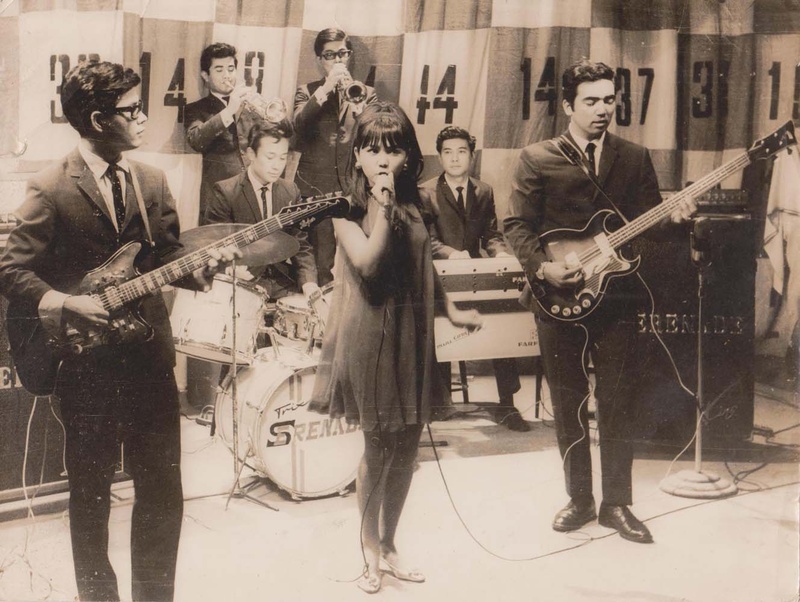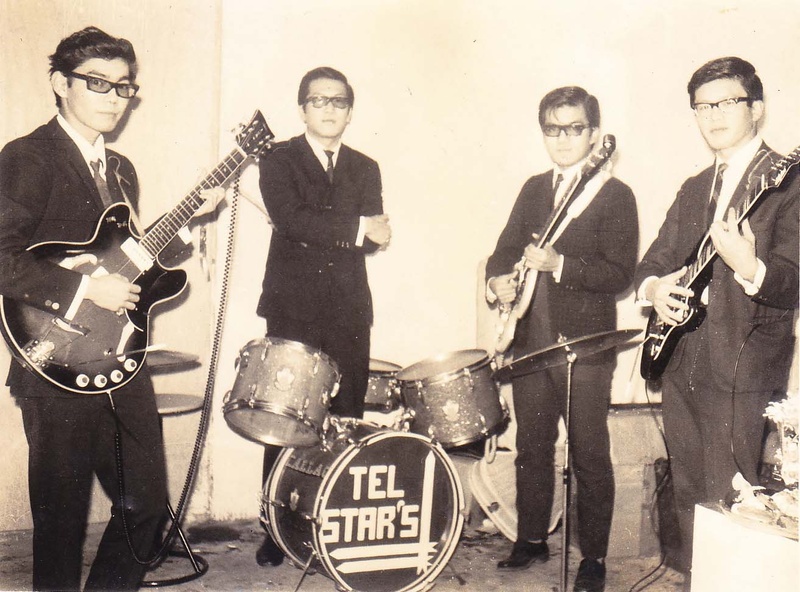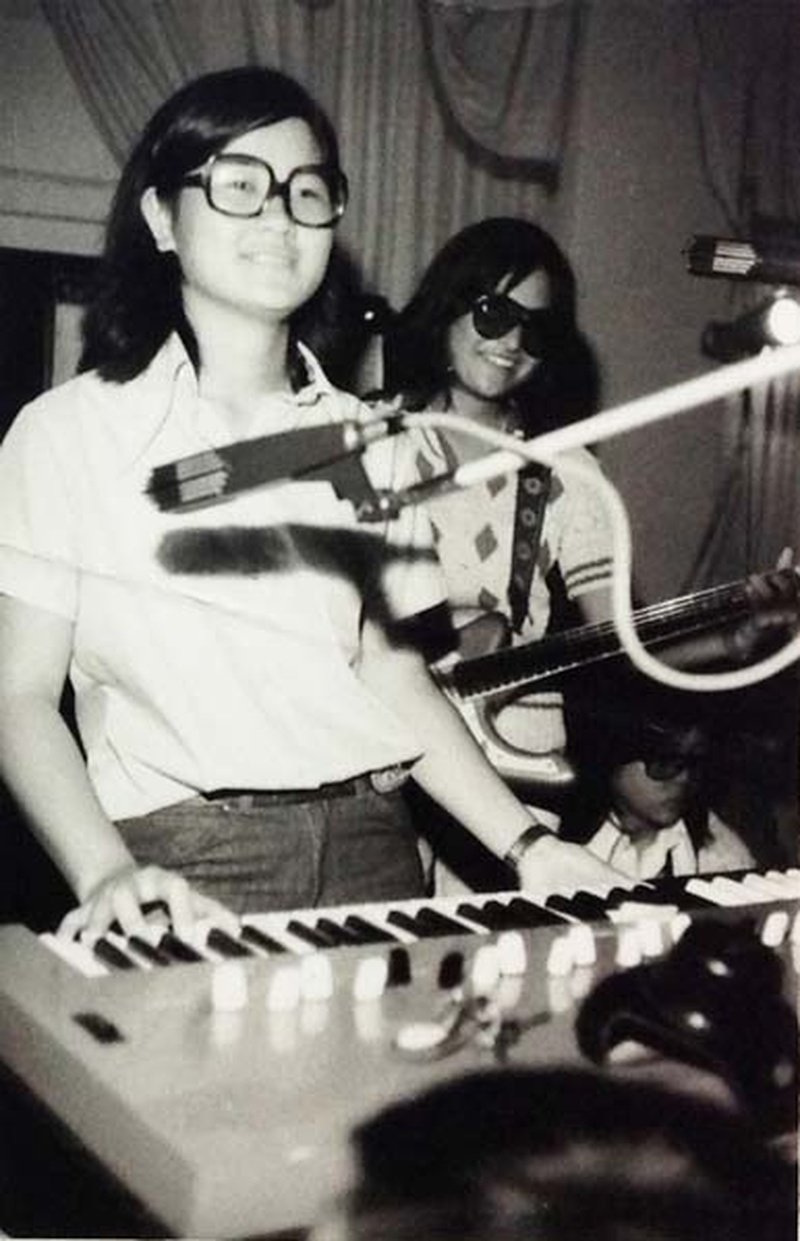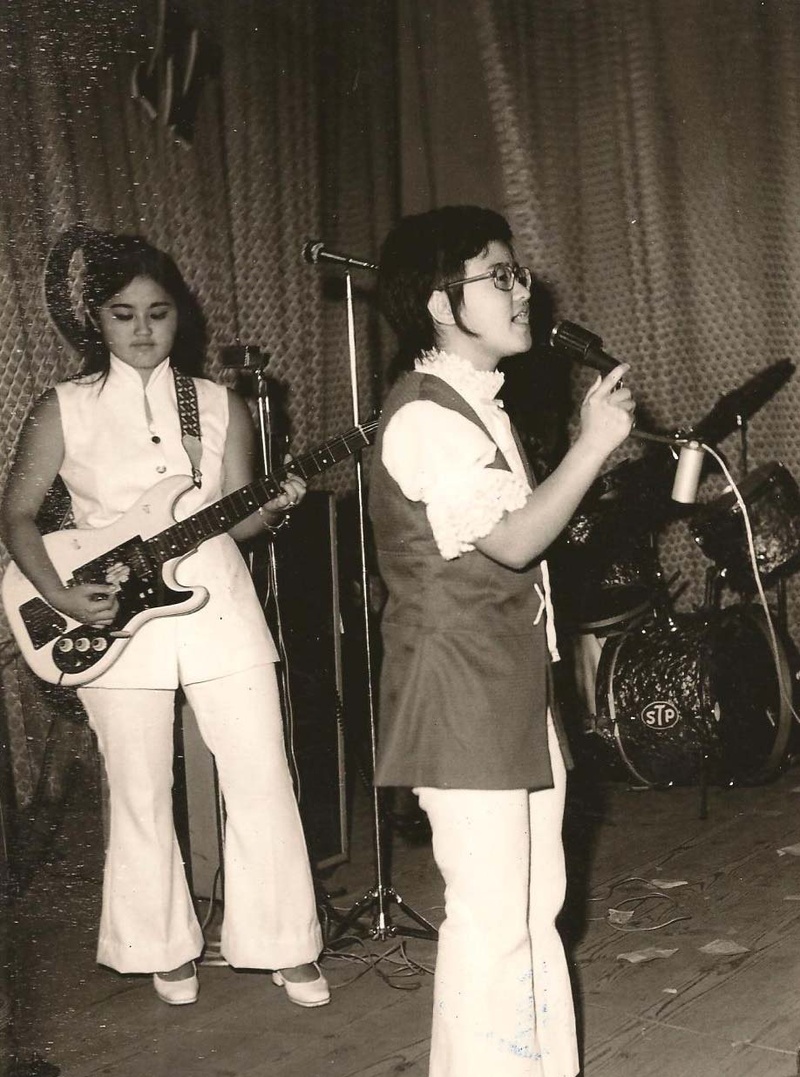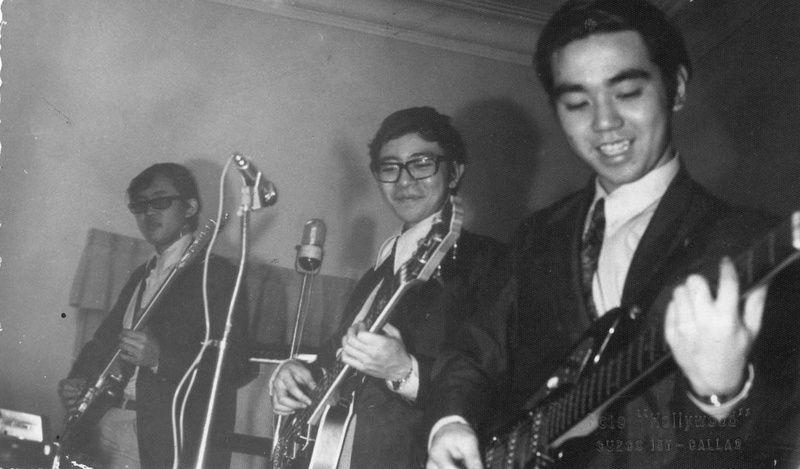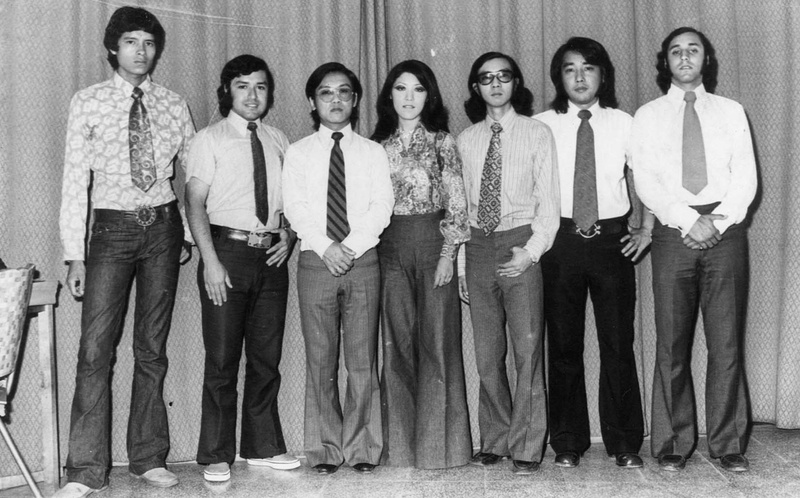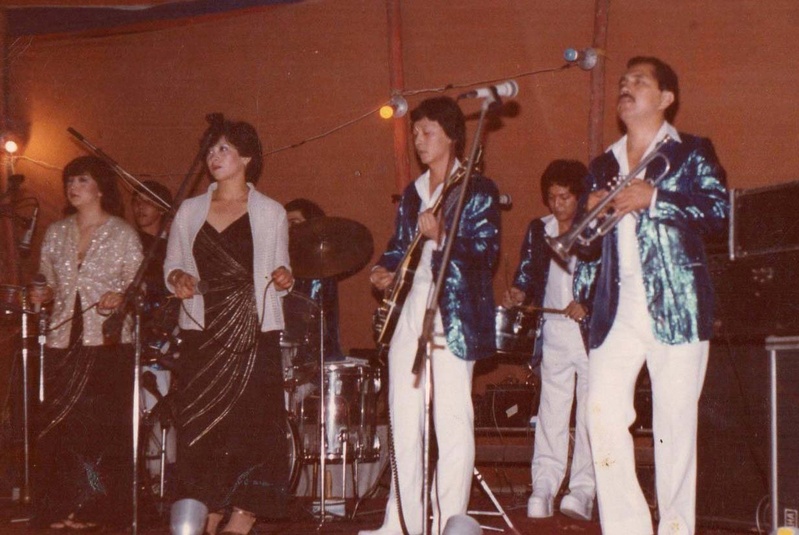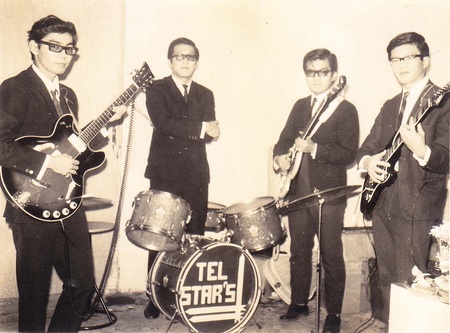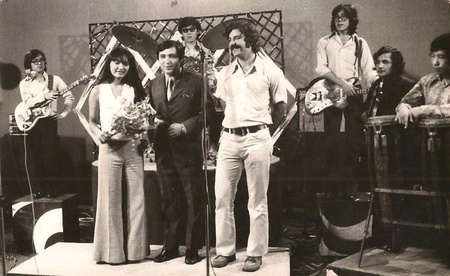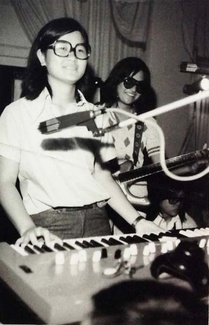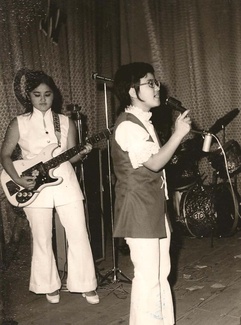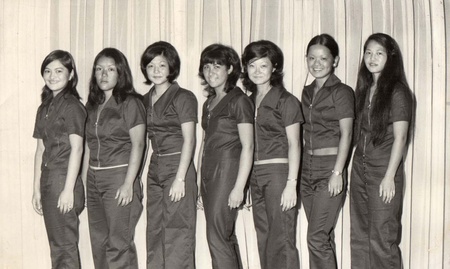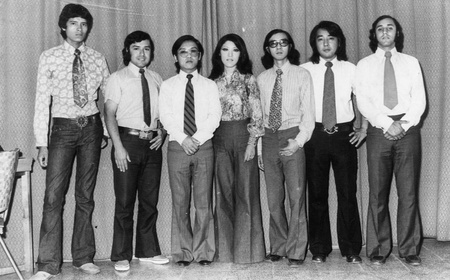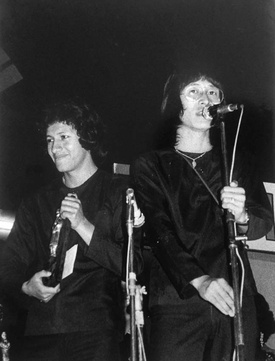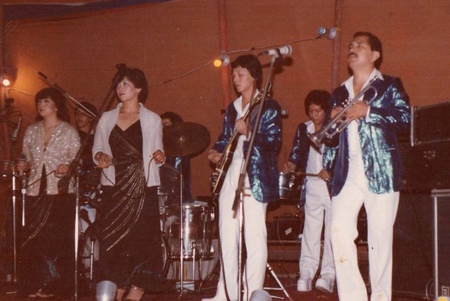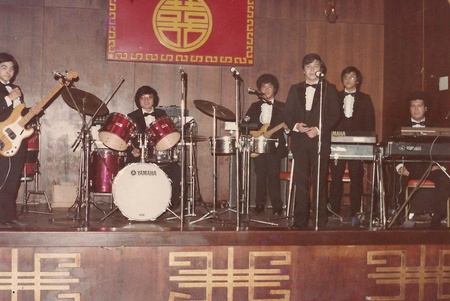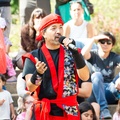A regular Nikkei crowd filled the dance halls every week. Witness to this are the Majestic Hall, the Kaseijo Gakko by Sáenz Peña in La Victoria or the Chinese Beneficence. Every week there were parties in the Japanese colony in Lima. To give greater excitement, the place was decorated according to the occasion. If the party was called “The Grotto”, everything was decorated as if it were a grotto. If it was “Aquarium”, it was decorated as such, even with water and fish. This is how Nori Yonashiro, founder of the Seventy Seven orchestra, remembers theme parties. Good music couldn't be missing either. There were live orchestras that enlivened the evening, playing covers of fashionable groups until dawn.
Generally, the young Nisei of those years, such as those from the Nisei University Association of Peru (AUNP), organized these parties that began at 11 at night until 3 or 5 in the morning of the next day. At that time, you could still walk calmly through the streets of Lima. As an end to the party, romantic music or ballads were a must.
During these holidays and at family gatherings, various Nikkei musical groups were born. Some were more rock and others were more romantic. Others had musical experience and many others just the desire to make music.
Key Ytosu, former member of the female group Arcoiris, remembers it this way: “My aunt got married in 1970. They organized a party at the Dai Hall of the Peruvian Japanese Cultural Center, we decided to sing and the guys from the AUNP liked it. They hired us for their New Year's party! We didn't know much about music, but we had the desire and we just threw ourselves into it. Luckily, Ramón Villaverde Masaki from the group Los Dorados was our music teacher. Some of us had a musical ear, but others needed a little help. For example, to play the organ, they marked the keys with tape. So I already knew which key to play.”
Many of these Nikkei groups performed in clubs, institutions and even public venues, inside and outside the community. The presentations at the cinema matinees are also remembered, with up to seven bands per afternoon. Many also recorded albums and some others appeared on local television and were even tempted to travel abroad.
Yoshi Hirose, current leader of the group Yoshi and Los Blue Stars, tells a curious anecdote. “My group and I performed at a matinee together with other bands. We all left our instruments on the side of the stage. When it was our turn, we didn't know which ones were ours. There were so many! The presenter was rushing us. 'Let the Chinese come out and play!' There was no choice but to leave with only one guitar. We did not know what to do. Once on stage, it occurred to us to dance, including the drummer. It didn't take long for us to get screwed. Just as we entered, we had to leave the stage.”
But time passes and this era of musical groups and parties was fading. As the saying goes: “To remember is to live again.” Why don't we remember some of these groups?
SERENADE ORCHESTRA
In 1960 a group of young people played as amateurs at the Unión Pacífico Club: Manuel Inamine, Pedro Kanashiro, Augusto Ikemiyashiro, Manuel Sato, Pepe Arakaki, Guillermo Kiyamu and Felipe Higa. These last three created Serenade in 1961, the first musical group of the Peruvian-Japanese community. Among its other members we find Kochan Ikeda, Víctor Mune Yamakawa, Lencho García, the brothers Masa and Tomu Sakihara, Fernando Higa, Héctor Lazo, as well as Olga Chinen, Ricardo Tamaki, Carlos Kiyamu and Irene Sakihara.
A few years later and with more experience on stage, its charismatic leader Pepe Arakaki combines singing with animation. Serenade achieves a unique style that would influence future orchestras. They rubbed shoulders with local artists and appeared on television, such as in the remembered family program Bingo de Domingos Gigantes. They were even tempted to perform in Japan, but it did not materialize.

THE TELSTARS
In 1966 the first Nuevoolero group of the Nikkei community was born. They were four enthusiastic Chalacos who opted for instrumental music: Jorge Akira Yamashiro, Emilio Tabo Nakankari, Jorge Miyagui and Edmundo Miyagui. They named the group Los Telstars, inspired by a hit by the American group The Ventures. They played covers in English and Japanese, although they also accompanied different Nikkei singers of the time, such as Ana Higa, Jinso Kanashiro and Rosita Miyashiro.
Their debut was at a family gathering, but professionally they shined at a party at the San Martín de Porres Medical Post. For two years, Los Telstars entertained parties, bingos and matinees in cinemas, both inside and outside the neighborhood. In 1967 they traveled to Arequipa to entertain the Nikko magazine beauty contest. They had presentations at different social activities and on a program on channel 6 in Arequipa.
Despite their fame, the group decided to disband in 1968. They dedicated themselves completely to their studies at the university.
MINT CANDY
With a fresh and romantic touch like its name, Caramelo de Menta appeared in 1970. Among its members, we can remember Justo Urbina, Roberto Chicho Higa, Ricardo Miyagui, Toribio Eichi Hattori, Augusto Ayesta, Luis Chávarri, Predrag Stojakovic and Ana Higa.
For two years, Ana Higa's rocking voice made her fans vibrate. After her retirement, Chiyo Akamine enters with a more Japanese and melodious proposal. With their income, they recorded the single in Japanese “Why are you going to Kyoto?” in 1972. In a short time it became a hit on local radio, leading the public's preference for several weeks. Until now it is Caramelo de Menta's most remembered and well-known song.
THE PRETTY FACE OF MY DOG
The Pretty Face of my Dog appeared in 1970. With the well-known singer Pochi Marambio as vocalist and accompanied by Víctor Kochan Sakata, Pancho Kanagusuku and Augusto Tokashiki, the group stood out from others for its more relaxed and even hippie appearance.
Although their artistic life was very short (1970-1972) and their performances were few, they are remembered as a group that imposed themselves on the system through their style and music.
JUST GIRLS: RAINBOW, CRIMSON CLOVER AND THE RAINS
At the beginning of the 70s, three groups made up entirely of women appeared on the scene. Some more remembered than others, their suggestive names showed the feminine side of rock. Crimson Clover had a fleeting time on stage. Las Lluvias were like the female version of the group Seventy Seven and Arcoiris was around for about four years.
Arcoiris was the group that brightened the Nikkei parties between 1970 and 1974 with a varied repertoire between classic and melodic rock. Among its members we remember the Chie sisters, Nancy and Nora Kamida, the Mine and Key Ytosu sisters, Akemi Ytosu, Kinu Ytosu, Hide Moromisato, Pamela Higa, as well as Charo Makiya and Jazmine Chong Onaga. He had a successful career, but they decided to dissolve the group in 1974 to dedicate themselves to their personal plans.
THE GOLDEN
Julio Chinen, a music fan and owner of a photography studio (El Marañón), enters the music scene by chance. One of his clients suggests that he join his group Los Dorados. From that day on, Los Dorados was already playing at parties in the Japanese colony. Only one year did they shine on stage. In 1969 Los Dorados broke up and Julio Chinen formed his own group in 1970: Los Dorados Nisei.
In the beginning, in Dorados Nisei there were: Julio Chinen, Alberto Leyva, Tito Chinen, Masami Tobaru, Aki Nagamine and Manolito Shimabukuro. But shortly after, with the departure of Julio Chinen, Guillermo Asato, Doris Yabiku, Masao Onaga and Coco Hirashima joined the group. At parties they appeared as a background group from 3 to 6 in the morning. The couples in love were eagerly waiting for them to dance to “How big my beautiful love by vocé” by Roberto Carlos, one of their most requested covers and which they recorded on an album in 1971. They played for the last time at the New Year's party in 1974. .
NISEI STRAWBERRY
In that same year, some very young boys who were barely coming of age appeared on the scene. With tanomoshis they bought their own instruments and formed "Nisei Fresa". The public cheered them "Fresa Nisei!, Fresa Nisei!" The name sounded better and that's how it stayed.
Fresa Nisei was part of Fresa Nisei throughout its career: Arturo Aki Nagamine, Alberto Leiva, Luis Masami Tobaru, Doris Yabiku, Chio Akamine, Rosita González, Rosita Miyashiro, Manuel Isa, José Arteta, Eduardo Cano, Pascual Vázquez and Víctor Colina, among other musicians. They played whatever was fashionable, in English, Spanish or Japanese. They recorded two single albums: "La brisa y yo" and "Retén la noche".
But it was already the 80s and the time of parties in the large dance halls and institutions began to diminish as well as the contracts. In 1983 it was his last presentation.
THE ZIG ZEROS, THE BARONS AND THE SEBASTIANTH BY YOSHI HIROSE
Yoshi Hirose is a prominent Nikkei singer who also ventured into this musical scene but with a broader vision. As a band they preferred stages outside the colony.
Between 1967-1968 he appeared on stage for the first time with Los Zig Ceros. Yoshi answers Lucho Watanabe's call to make music together with Fernando Velarde, Richard Chiang and José Hohagen. They performed at various matinees, recorded albums and even appeared on television shows.
In 1972 Yoshi changed ballads for funk and rock. Fashion and music changed and was now more psychedelic and rock. His new group was Los Barones along with Aurelio Nakasone and Andrés Dulude (from the group Frágil), among others. They won a music contest organized by Coca-Cola and renamed the group Sebastianth. Eventually, Yoshi teams up with Luigi Montagne and forms the duo Yoshi & Luigi. Currently Yoshi Hirose revives the music of the 60s and 70s with his band Los Blue Stars.
SEVENTY SEVEN
Several Nikkei orchestras appeared at this time, but few have survived until now and successfully, like Seventy Seven. With music ranging from new wave and disco to rock and salsa, Seventy Seven has entertained New Year's parties and social activities from its beginnings in 1969 to the present. Among its first members, we remember Nori Yonashiro, Daniel Hara, Hide Yonashiro, Mori Furuken, Shigeru Yamanoha, Marina Yonashiro and Hiromi Maegushiku.
Nori Yonashiro, keyboardist and director, tells an unforgettable anecdote that happened to them in Arequipa. “In 1976 we traveled to Arequipa as part of the Japanese delegation of the APJ (then the Central Japanese Society) for an international festival. We were all supposed to be Japanese and we didn't know how to speak Spanish. On the day of the concert, we sang music in Japanese but we conquered the people of Arequipa with the waltz 'José Antonio'. 'How well they pronounce Spanish!', people told us. They asked us for photos and autographs. They thought we were Japanese artists! We were sorry to disappoint them and in order not to lose the charm, we could only say 'Doomo arigatoo' (thank you very much) and 'sayonara' (goodbye).”
There are so many other groups that we could remember, such as Clan Pop Nisei, Rh Positivo, Arizona Nisei and Los Doltons with César Ychikawa and Kike Goya, among others. All of these groups were part of a time when Nisei youth organized their parties and vibrated with their own music.
Acknowledgments and sources: Yoshi Hirose, Nori Yonashiro and Hiromi Maegushiku (Seventy Seven), Key Ytosu, Agustín Tokumori and Carlos Shinzato. Movida Musical Nikkei (Documentary by Ricardo Miyagui Maeda), Mercado Latino Magazine (2010), Diario Peru Shimpo (2013), Cinco Continentes TV by Jaime Del Águila (website) and La Cumbia de Mis Viejos (blog).
* This article is published thanks to the agreement between the Peruvian Japanese Association (APJ) and the Discover Nikkei Project. Article originally published in Kaikan magazine No. 110, and adapted for Discover Nikkei.
© Text and photos: Peruvian Japanese Association
© 2017 Texto y fotos: Asociación Peruano Japonesa



